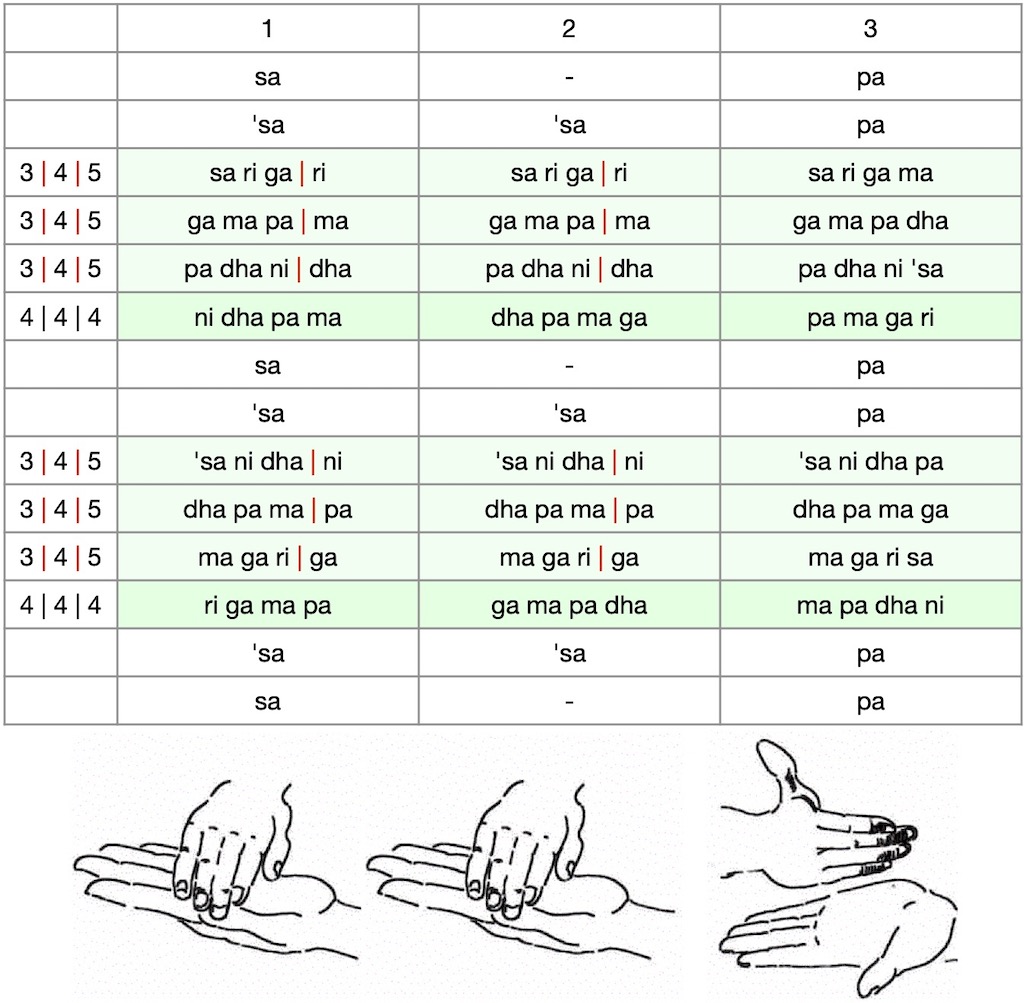
“Flow” exercises
A series of “Flow” exercises invites learners to practice all the 72 musical scales of Carnatic music (“mela” or mēlakarta rāga). It is meant to supplement the comprehensive standard syllabus (abhyāsa gānam) attributed to 16th c. composer Purandara Dasa.
Repeated practice need not be tedious; instead it instantly turns joyful whenever we remind ourselves that Indian music “is created only when life is attuned to a single tune and a single time beat. Music is born only where the strings of the heart are not out of tune.” – Mahatma Gandhi on his love for music >>
As regards “time beat” in Carnatic music, the key concept is known as kāla pramānam: the right tempo which, once chosen, remains even (until the piece is concluded). | Learn more >>
Music teachers will find it easy to create their own versions: exercises that make such practice more enjoyable. | Janta variations >>
Concept & images © Ludwig Pesch | Feel free to share in accordance with the
Creative Commons Attribution-NonCommercial-ShareAlike license >>
Rūpaka tāla (3 counts/syllables)
Lesson 4: “ta ki ta“- trikāla = 3 speeds
Full lesson: Practice four widely used Carnatic talas >>
a = middle octave (madhya sthayi)
‘sa = higher octave (tara sthayi)
Download this audio file (2 MB, 2 min. mono)
Credit: eSWAR / FS-3C Sruthi petti + Tanjore Tambura
South Indian conventions (raga names & svara notation): karnATik.com | Guide >>
The above svara pattern may be sung, hummed or practiced silently with any svara variants: those you are already familiar with (e.g. raga Mayamalavagaula, mela 15, raga Dhirasankarabharanam, mela 29, raga Mecakalyani, mela 65) or any other you want to practice.
Enjoy practicing by way of gradually getting into a state of flow: deep concentration while feeling completely absorbed by an activity.
